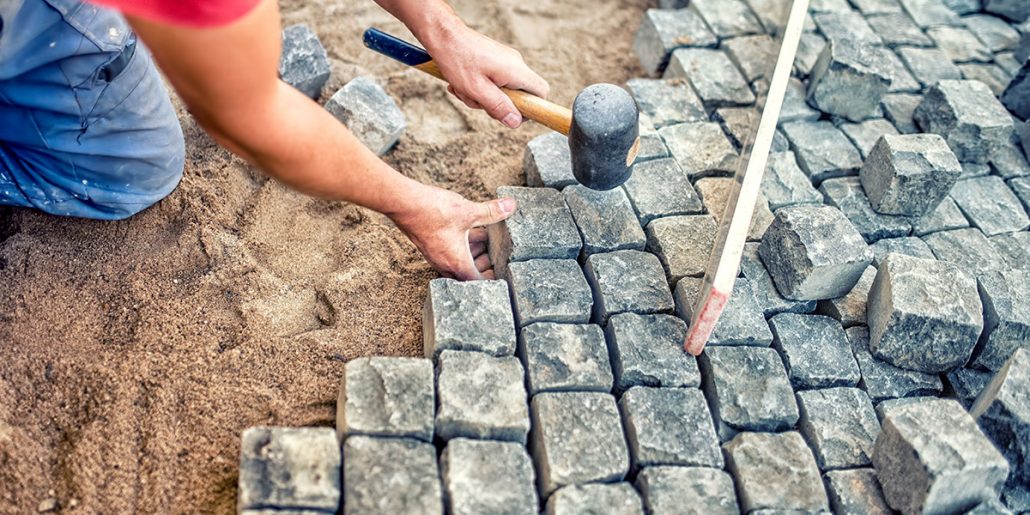Top-Quality Roofing Contractor Services for Your Home
Wiki Article
Unlocking the Tricks of Sustainable Masonry Construction Practices for Eco-Friendly Buildings
Amongst the myriad methods to eco-friendly structure, lasting masonry building stands out as a tried and true and resilient approach that holds a wide range of untapped potential. From the option of materials to cutting-edge construction techniques, the secrets to achieving sustainability within masonry building and construction are diverse and appealing.Advantages of Lasting Stonework Building And Construction
Embracing sustainable masonry building methods not just decreases environmental effect yet additionally uses lasting economic advantages to home builders and communities. By utilizing materials like recycled bricks, blocks, and stones, contractors can significantly reduce the carbon footprint of their projects while advertising source effectiveness. In addition, sustainable stonework building strategies, such as appropriate insulation and thermal mass residential or commercial properties, can boost power effectiveness within structures, bring about minimized functional prices with time.Moreover, the longevity and strength of masonry frameworks add to lasting economic benefits. Buildings created utilizing sustainable stonework practices typically call for less upkeep and repair, translating to cost financial savings for builders and residential or commercial property owners. The long life of masonry products also ensures that frameworks remain secure and secure, decreasing the need for regular improvements or substitutes.
Eco-Friendly Stonework Materials
Making use of green stonework materials is a critical action in the direction of enhancing the sustainability of building and construction techniques and reducing environmental impact while taking full advantage of long-term financial advantages. Sustainable masonry products are sourced, generated, and used in a fashion that lowers general ecological effect. Sustainable concrete obstructs include recycled accumulations and may feature improved insulation properties, adding to energy effectiveness in buildings.Additionally, natural products like adobe, rammed planet, and straw bales give excellent thermal mass homes, decreasing the need for home heating and cooling down power. These materials are usually locally available, advertising local economic situations and minimizing transportation-related carbon exhausts. By picking environmentally friendly masonry materials, building and construction jobs can considerably minimize their environmental footprint and add to the creation of much healthier, a lot more sustainable developed settings.
Energy-Efficient Masonry Techniques
Energy performance plays an important role in enhancing the sustainability of masonry building and construction techniques. One key energy-efficient masonry technique is the usage of thermal mass, which includes including thick materials like concrete or block right into the structure's structure to soak up and store heat.
Advancements in Sustainable Masonry
Recent advancements in sustainable stonework practices have actually caused innovative methods that are reshaping the building market. One such innovation is the growth of self-healing concrete, which uses microorganisms installed within the concrete to heal fractures autonomously. This development not only reduces upkeep costs yet likewise enhances the sturdiness of stonework structures, adding to their sustainability.
Another notable innovation is the use of recycled aggregates in masonry construction - masonry contractor. By incorporating materials such as smashed ceramic waste or recycled glass into concrete blends, contractors can lower the ecological influence of building and construction tasks while keeping architectural stability. This method not just diverts waste from garbage dumps but also saves all-natural resources, making it a key development in sustainable masonry building
In addition, the assimilation of electronic layout devices, such as Building Information Modeling (BIM), is revolutionizing the way stonework structures are intended and created. BIM permits for even more exact computations, reduced product waste, and boosted power performance, eventually causing more sustainable structure practices. These advancements jointly signify a promising future for sustainable masonry building and construction in the age of eco-friendly structures.
Future Trends in Masonry Sustainability
With the innovative strides made in lasting stonework practices, the future trends in stonework sustainability are positioned to more revolutionize the construction industry. One of the crucial patterns shaping the future of stonework sustainability is the increased combination of innovation. Advancements such as Building Info Modeling (BIM) and virtual reality simulations are being utilized to optimize masonry building and construction procedures, causing reduced material waste and improved power effectiveness in structures.Furthermore, the advancement of unique sustainable products is established to play a considerable role in enhancing the eco-friendliness of masonry building and construction. masonry contractor. Technologies like self-healing concrete, recycled accumulations, and bio-based binders are obtaining grip for their capability to minimize ecological influence while preserving structural stability

Conclusion
To conclude, sustainable stonework construction practices provide many advantages for environmentally friendly buildings. By making use of environment-friendly materials and energy-efficient strategies, masonry can add to a more lasting built atmosphere. Developments in sustainable masonry are constantly being created to further boost the environmental efficiency of buildings. Looking towards the future, the pattern of masonry sustainability is expected to grow, bring about even more eco-friendly and energy-efficient building and construction techniques in the years ahead.Report this wiki page